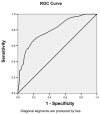Development and validation of the Current Opioid Misuse Measure
- PMID: 17493754
- PMCID: PMC1950245
- DOI: 10.1016/j.pain.2007.01.014
Development and validation of the Current Opioid Misuse Measure
Erratum in
- Pain. 2009 Mar;142(1-2):169
Abstract
Clinicians recognize the importance of monitoring aberrant medication-related behaviors of chronic pain patients while being prescribed opioid therapy. The purpose of this study was to develop and validate the Current Opioid Misuse Measure (COMM) for those pain patients already on long-term opioid therapy. An initial pool of 177 items was developed with input from 26 pain management and addiction specialists. Concept mapping identified six primary concepts underlying medication misuse, which were used to develop an initial item pool. Twenty-two pain and addiction specialists rated the items on importance and relevance, resulting in selection of a 40-item alpha COMM. Final item selection was based on empirical evaluation of items with patients taking opioids for chronic, noncancer pain (N=227). One-week test-retest reliability was examined with 55 participants. All participants were administered the alpha version of the COMM, the Prescription Drug Use Questionnaire (PDUQ) interview, and submitted a urine sample for toxicology screening. Physician ratings of patient aberrant behaviors were also obtained. Of the 40 items, 17 items appeared to adequately measure aberrant behavior, demonstrating excellent internal consistency and test-retest reliability. Cutoff scores were examined using ROC curve analysis and reasonable sensitivity and specificity were established. To evaluate the COMM's ability to capture change in patient status, it was tested on a subset of patients (N=86) that were followed and reassessed three months later. The COMM was found to have promise as a brief, self-report measure of current aberrant drug-related behavior. Further cross-validation and replication of these preliminary results is pending.
Figures



References
-
- Adams LL, Gatchel RJ, Robinson RC, Polatin P, Gajraj N, Deschner M, Noe C. Development of a self-report screening instrument for assessing potential opioid medication misuse in chronic pain patients. J Pain Symp Manage. 2004;27:440–59. - PubMed
-
- Akbik H, Butler SF, Budman SH, Fernandez K, Katz NP, Jamison RN. Validation and clinical application of the Screener and Opioid Assessment for Patients with Pain (SOAPP) J Pain Symptom Manage. 2006;32:287–293. - PubMed
-
- American Pain Society. Principles of analgesic use in the treatment of acute pain and cancer pain. 4. Glenview, IL: American Pain Society; 1999.
-
- American Pain Society. Clinical practice guideline number 2. Glenview, IL: American Pain Society; 2002. Guideline for the management of pain in osteoarthritis, rheumatoid arthritis, and juvenile chronic arthritis.
-
- Butler SF. The baby or the bath water? Addiction. 2004;99:413–4.

